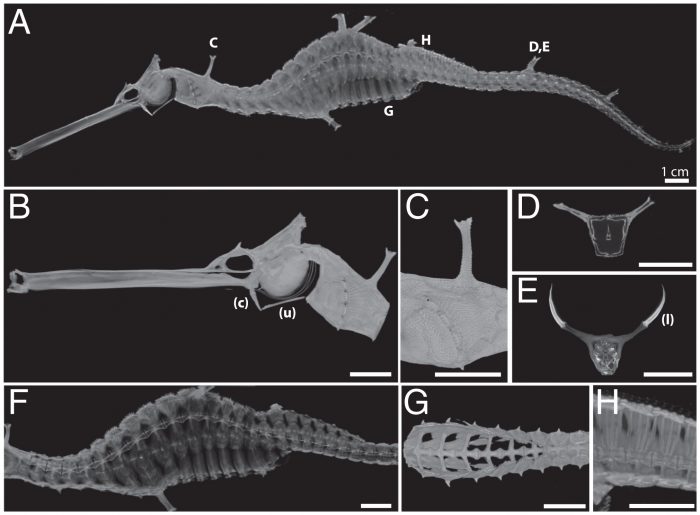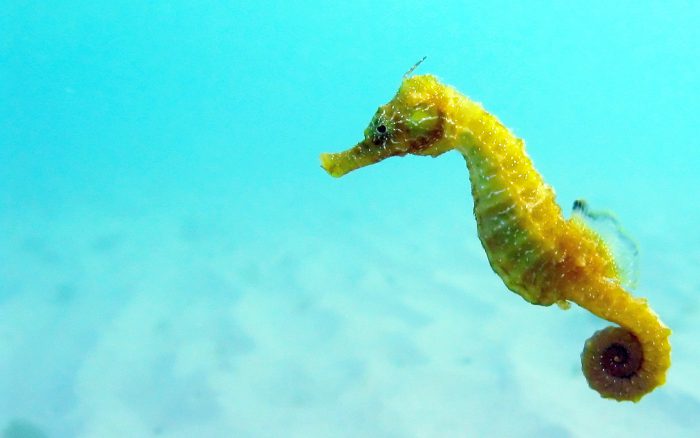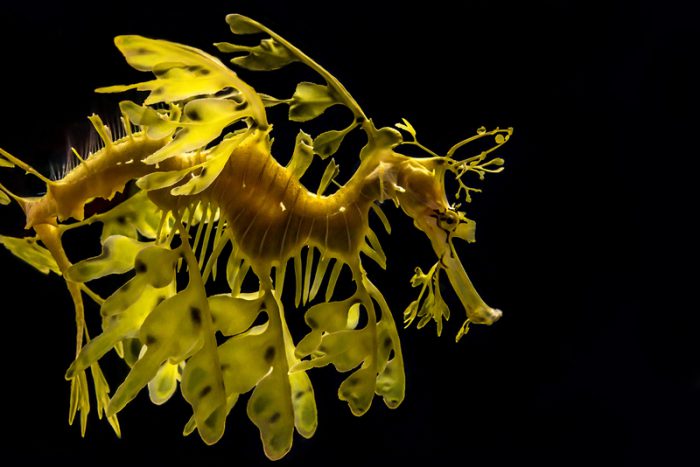The seadragon is ... ???
An alien creature? A mythical water fairy? A ... fish?
Yes, that final answer is correct! It is indeed a fish.
But let's not play around. It is one truly odd fish. Even when compared to one of its closest relatives, the seahorse, a seadragon is something unique.
Now a new study led by a team of American scientists from across the United States has analyzed seadragon DNA to try to understand what makes these creatures so utterly unlike anything else. The answer they found?
It's genetic. As in, scientists can actually pick out the parts of their DNA that help make them the unique species they are!
What is DNA?
DNA is an extremely complex chain of molecules that form a blueprint of how to make a living thing. The complete DNA sequence of a living thing is also known as a genome.
DNA is so unique to people, that it is different from individual human to individual human, like fingerprints. But humans still share almost all of the same DNA with each other. It is the same with all other living things. Seeing an animal's genome is seeing the instructions of how they are made.
What makes seadragons so unlike other fish?

These images of a seadragon's skeleton and anatomy help show how unique their bodies really are. (Small, Healey, et al.)
Before we get into what was found in seadragon DNA, let's talk about what makes them different to other fish. Though incredibly beautiful and striking animals, they lack many things that other fish have, including teeth, certain facial bones, and many ribs. Instead, they have long, tubular snouts.
And even though seahorses have those too, the seadragon is different from them as well. Its spine is more crooked and oddly shaped than that of the seahorse.
And it doesn't have the prehensile tail that a seahorse does—this is a tail that can curl and grab things like a finger or tentacle. Seahorses use their tail to moor (or attach) themselves to objects and stay in one place. Seadragons, on the other hand, can do no such thing. Outside of a few tiny, thin fins, they are pushed around at the mercy of the currents.
What is behind such a bizarre and beguiling design?
Strange sequences

Though similar, seahorses are much more flexible than seadragons. (Wikimedia Commons)
To answer this question, the researchers sequenced—or mapped out—the genome of two seadragon species, the leafy seadragon and the weedy (or common) seadragon. They compared these genomes to those of other similar fish, like pipefish and seahorses.
The results showed researchers that the seadragon genomes lack all sorts of genetic information that usually leads to the creation of limbs, teeth, facial structure, and parts of the central nervous system. In other words, the genome shows where the animal is missing the 'instructions' that would lead to it being a 'normal' fish.
Jumping genes!
The seadragon genome also has an unusually high number of genes known as transposons. Scientists call these 'jumping genes' because they move very easily through a living thing's genetic code. In short, they make that creature more capable of rapid evolutionary change.
So to sum up, seadragon DNA is missing all sorts of information found in other fish and is loaded with unpredictable genes that have a habit of changing their position. So it that why they evolved so uniquely? It could be. DNA science is such a new field of study that scientists are cautious about drawing any definitive conclusions. There's still so much more to learn!
But there is certainly a strong connection between a seadragon's unique form and its DNA. The more scientists study it, the more they are likely to see how this is true!
 The wildly beautiful leafy seadragon is one of three species. (ID 66820715 © Kwiktor | Dreamstime.com)
The wildly beautiful leafy seadragon is one of three species. (ID 66820715 © Kwiktor | Dreamstime.com)









